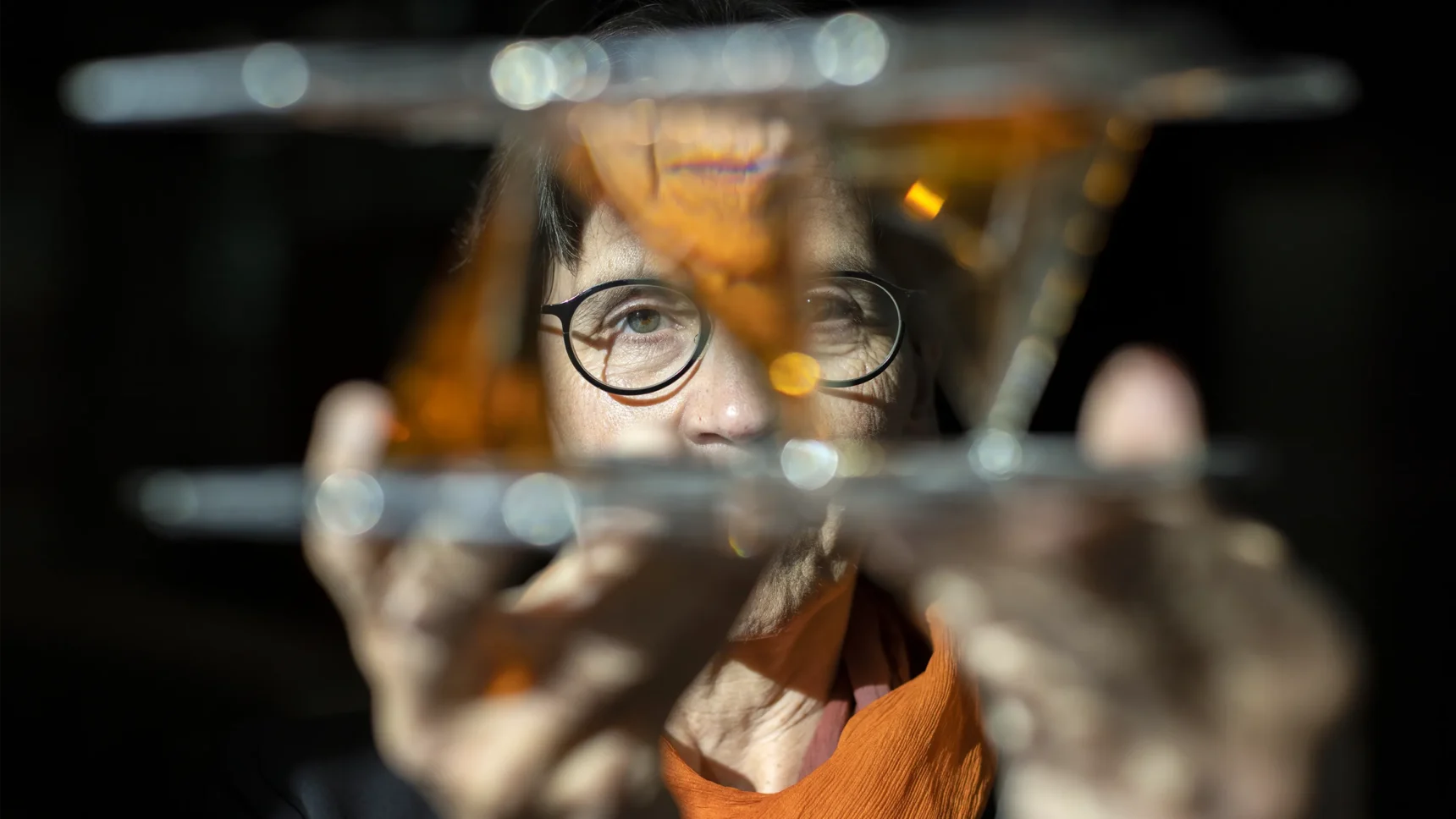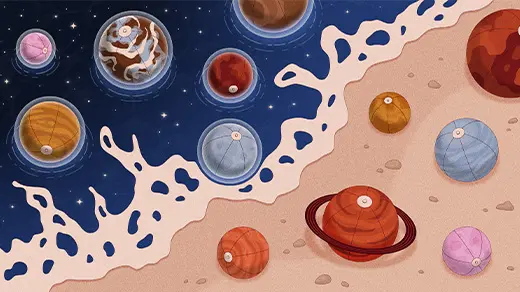The Physicist Who Glues Together Universes

Renate Loll studies the texture of space-time by simulating digital universes.
Ilvy Njiokiktjien for Quanta Magazine
Introduction
Renate Loll has seen universes that would give Doctor Strange nightmares. She’s explored 3D worlds, flatlands and fractured realities with fractional dimensions. She’s seen universes with gentle curves and universes exploding with violent spikes. She’s witnessed eternally expanding universes and universes in which space fails to exist.
After watching these and an uncountable number of other cosmic histories play out in the digital memory of her computers, Loll no longer takes anything for granted — certainly not the humdrum three dimensions of space and one dimension of time that make up the fabric of our reality.
“Nothing is preordained,” said Loll, a theoretical physicist at Radboud University in the Netherlands.
Loll believes that a careful census of these digital universes could unlock certain aspects of quantum gravity — the more precise quantum theory that presumably underlies Einstein’s notion of space, time and gravity. With general relativity, Einstein defined gravity — a mysterious force — as a consequence of the shape of space and time. A core tenet of quantum theory suggests that this shape is not just one straightforward geometry, but in some sense an average of all possible shapes. To these assumptions, Loll adds the seemingly obvious requirement that causes come before effects. She suspects that these three ingredients — geometry, quantum theory and causality — suffice to enable brute-force calculations of the fundamental structure of reality — no loops, strings or extra dimensions required.
Loll and her collaborators have spent more than 20 years approximating reality using patterns of digital triangles. Their theory, known as causal dynamical triangulations, has shown that if you blend a multitude of possible universes together, you can produce a cosmos that looks a lot like ours. She and her collaborators have also found hints that at tiny scales, space-time may have a completely unexpected structure — a quantum fingerprint of the blending of worlds.
“This is the first genuine piece of evidence that there is nontrivial quantum structure on short scales, which I would have never thought of classically,” she said.
Loll, who was just named a Knight of the Order of the Netherlands Lion, recently spoke with Quanta Magazine about why she became a space-time simulator, how she even makes all these possible universes, and where the field of quantum gravity might go next. The interview has been condensed and edited for clarity.
What drew you to study gravity and the structure of space-time?
I actually started with some graduate work in economics, but I soon got homesick for physics, which I had studied as an undergraduate. Economics is about predicting the behavior of people. High-energy physics, with its fundamental laws, is a lot simpler.
How did you come to launch your own approach to quantum gravity?
I spent 10 years of my life in the loop quantum gravity program. This was really exciting at first, but after doing countless extremely formal and abstract pen-on-paper calculations, in the early 1990s I began to feel envious of other groups who were carrying out more concrete studies of space-time by doing calculations on a computer.
Those studies suggested that computers could probe possible quantum structures of space-time, but they struggled to produce expansive fabrics of space like the one we see. My colleague Jan Ambjørn and I wondered if the problem was that the space-time those studies were using had an unrealistic, “Euclidean” geometry. Euclidean space-times are timeless. In them, time, which normally points in one direction, has been transformed into just another dimension of space, which has no intrinsic arrow. So those models don’t have any notion of causality — the requirement that cause comes before effect.
Perhaps the methodology could be saved, we thought, if we could bring causal structure into space-time. This is how our theory of causal dynamical triangulations (CDT) was born.
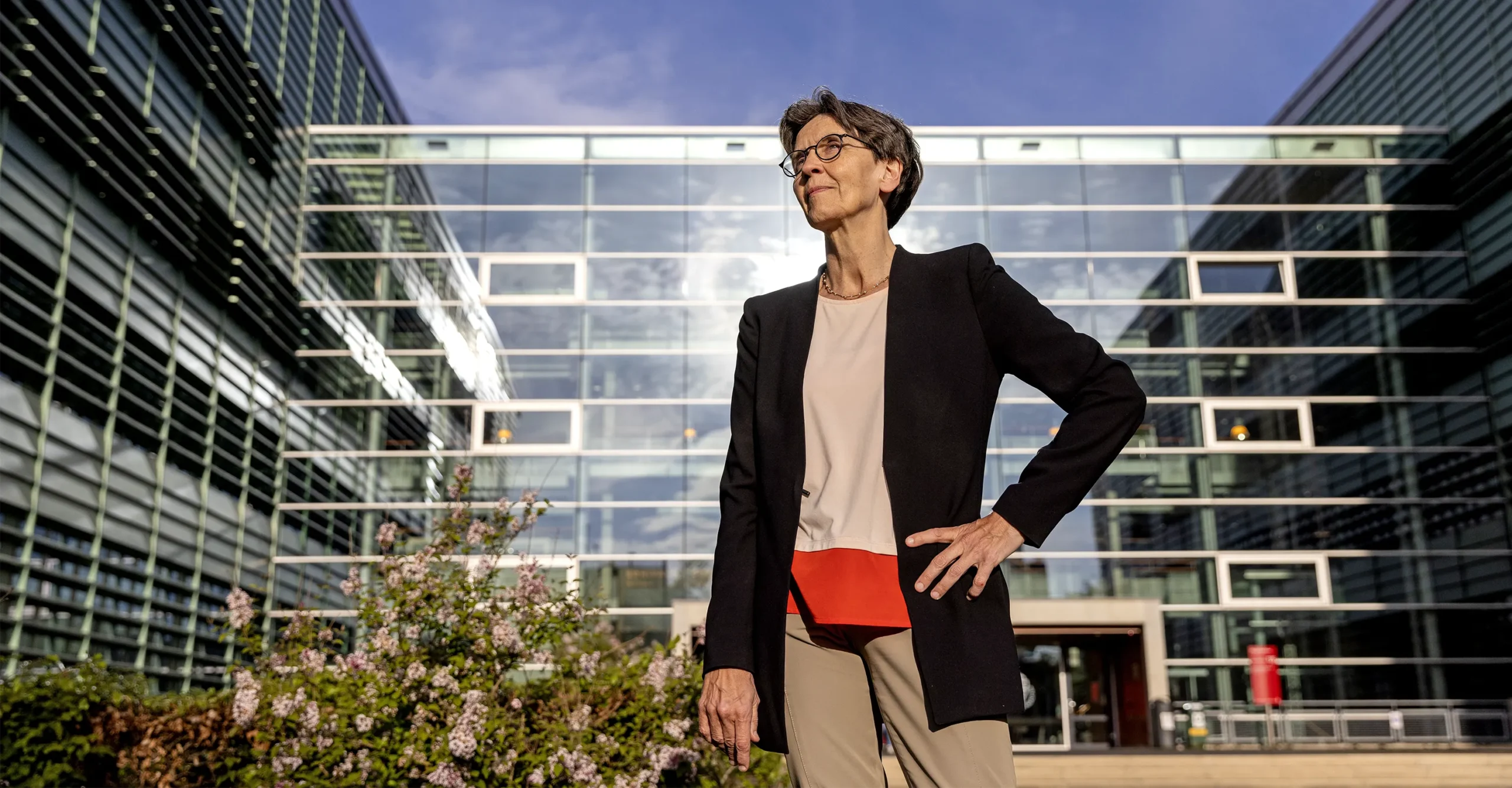
Loll, a theoretical physicist at Radboud University in the Netherlands, is on a quest to understand quantum gravity — the theory that presumably underlies Einstein’s theory of general relativity.
Ilvy Njiokiktjien for Quanta Magazine
What is CDT? In what sense is it a theory of quantum gravity?
CDT is a framework for calculating which geometry — and which textures in the fabric of space-time — should arise from quantum effects. We developed it by asking ourselves: What is the minimal set of ingredients we need to produce some interesting geometry of space-time?
How does one calculate the shape of the fabric of space-time?
We follow the tried-and-true technique of hacking a theory into a fixed number of little pieces so that a computer can handle it.
When you approximate a theory of space-time in this way, the simplest shapes to use are triangles, which you can glue together to make a curved canvas. Imagine gluing six equilateral triangles together around one vertex. That gives you a piece of flat space-time. Now remove one triangle and connect the sides of its neighbors. That gives you a cone — a piece of curved space-time. By adding or removing different numbers of triangles at each point, you can capture any space-time curvature.
Then comes the magic step. You let the shapes interact according to both classical and quantum rules.
Next you make the lattice finer and finer, almost like you’re zooming out, until the triangles melt away into shapeless points. Because you’ve introduced quantum aspects into your classical theory, something new and quite unexpected can emerge.
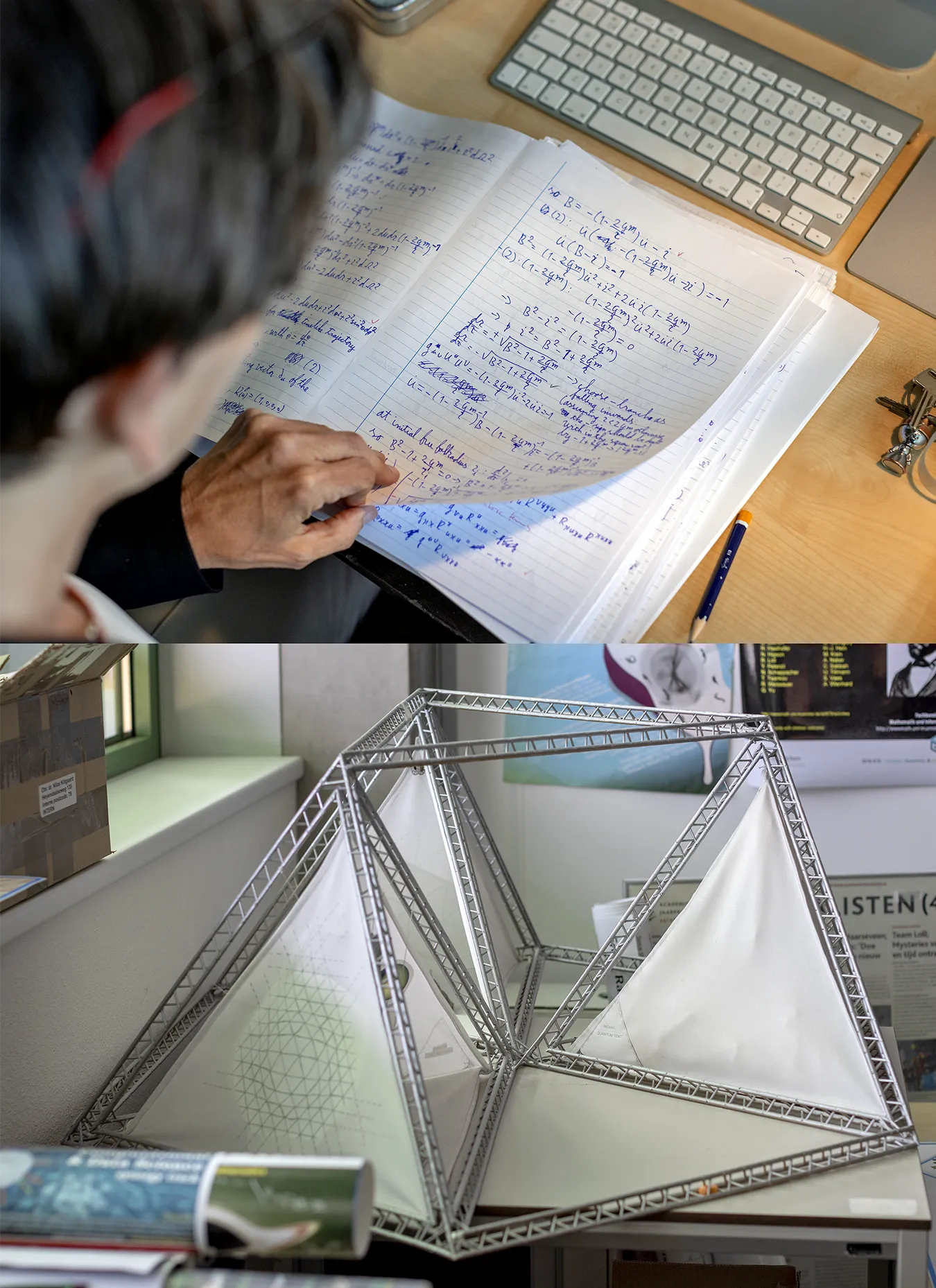
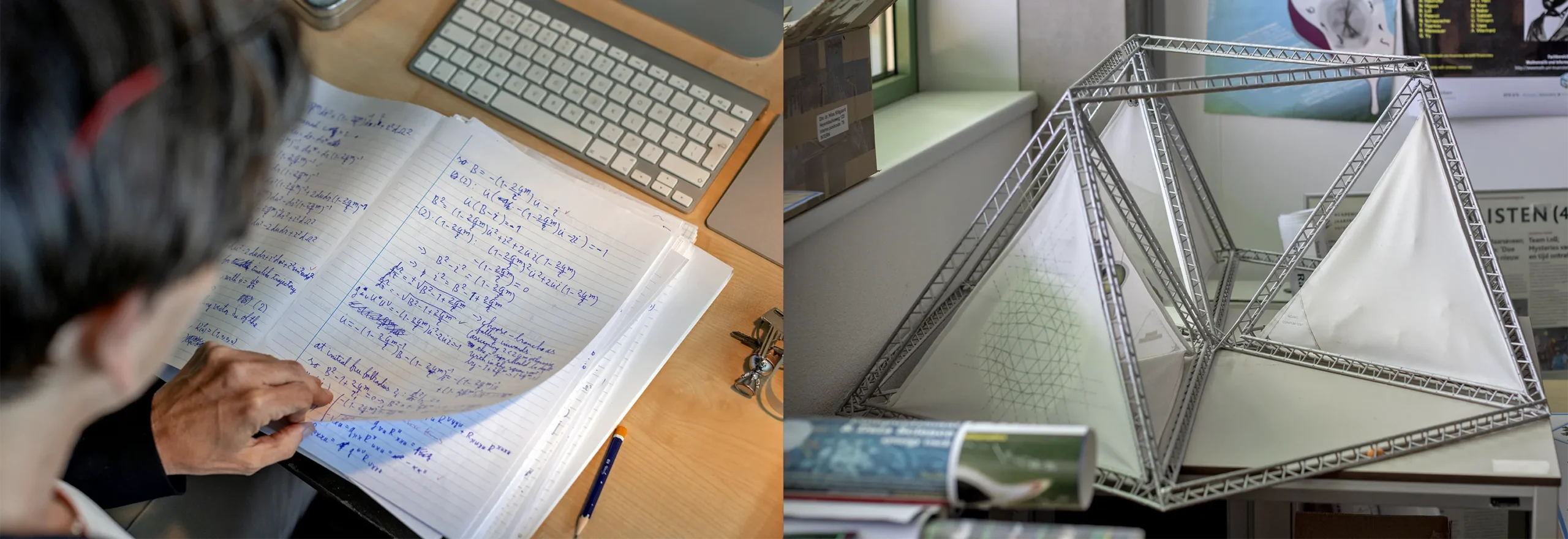
Ilvy Njiokiktjien for Quanta Magazine
To simulate universes, Loll uses models of space-time made from triangles that are randomly glued together.
Ilvy Njiokiktjien for Quanta Magazine
Which quantum rules do you use?
We use a universal procedure called the path integral to infuse Einstein’s gravity with some quantum essence. The path integral suggests that the universe we see is really a quantum combination, a “superposition,” of all possible space-time shapes. That’s the quantum ingredient.
The triangles give us a way of getting a handle on that process. Ideally we’d add up every possible way of gluing triangles together, representing all the possible histories the universe could take. But that’s impossible, so we approximate it by generating lots of random configurations of triangles to get a sense of which universes are the most likely. We weren’t the first to try something like this, but we were the first to get the procedure to spit out a universe that looks something like ours.
What sets CDT apart from other attempts to approximate space-time?
The causal part! As I mentioned, other groups had worked in a timeless “Euclidean” space. That makes the path integral easier to calculate for technical reasons, but you pay the price of including weird geometries that would let you travel through time and violate causality.
We wanted to keep time and the causal structure of space-time. Instead of cutting our triangles out of Euclidean space, where there’s less structure, we cut them out of normal space-time, which has a special time direction.

Loll found that if you blend bunches of possible space-times together, you can produce a cosmos that looks a lot like ours: It has three dimensions of space and one dimension of time.
Ilvy Njiokiktjien for Quanta Magazine
Once you hit on this scheme, how did you know if it was working?
A preliminary calculation in 1998 showed that keeping causality really did result in a fundamentally different theory. That gave us the courage to continue. Over the next several years we worked our way up to 3D simulations using tetrahedra.
We finally reached 4D — which is especially relevant for us, since we live in three dimensions of space and one dimension of time — in 2004. Then we held our breath and ran the simulations.
And?
What did we see? Nothing at first. The notion of dimension can be subtle, but one way to get a sense of it is to add more and more 4D triangles — first 50,000, then 100,000, then 200,000 — and see how the shape of the collective flock of triangles grows.
When we did that, we found that the flock grows exactly as if it were a 3D universe with one time direction. That had never been seen before. It might sound obvious that 4D building blocks can produce a 4D universe, but it isn’t. Previous attempts in Euclidean space had produced weird spaces where triangles clustered into crumpled balls or stretched out into stringy webs — they didn’t have any structure at all that we would recognize as large spatial dimensions. But somehow Einstein’s theory of gravity, the path integral, and causality had coaxed the building blocks to arrange themselves in an expansive 4D universe like ours. Then we could really make a claim that an extended universe could emerge from first principles.
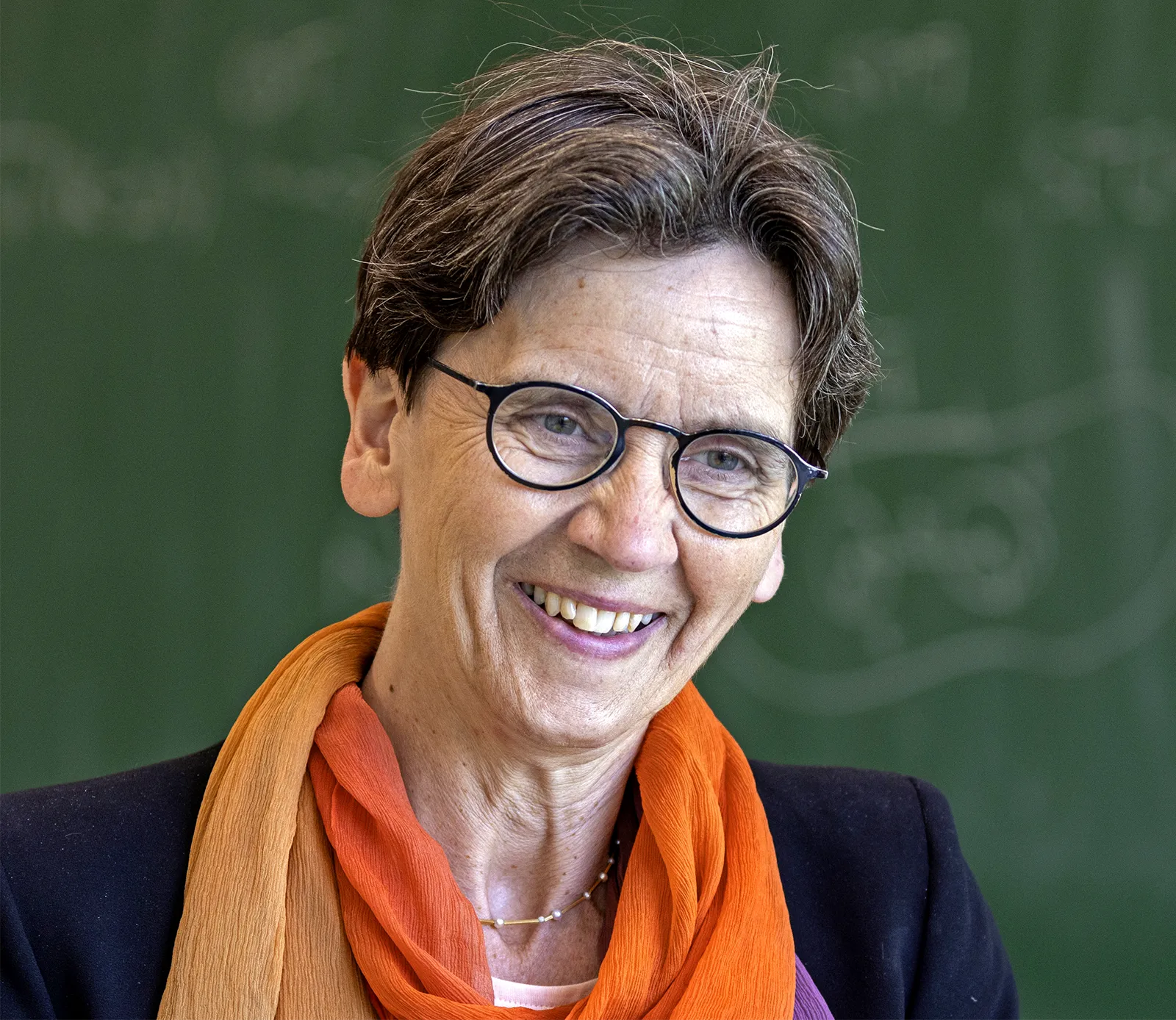
Loll started out studying economics and decided that making predictions about human behavior was too difficult. Physics, with its fundamental laws, was simpler.
Ilvy Njiokiktjien for Quanta Magazine
That sounds encouraging, but we already knew that space-time should be 4D. Does CDT make any predictions?
It does! We predicted that if you zoom in far enough, space-time loses its 4D nature. To see it, you have to study another sort of dimension, the dimension revealed by diffusion. For example, an ink drop spreads differently on a 2D page than it does in a 3D water glass, so by looking at diffusion you can get a sense of what sort of space you’re in.
Here, we found a remarkable result. When we simulated the release of an ink drop in our 4D universe, it spread out as if it were stuck in a roughly 2D space — although only for a few instants. Once it has time to spread out further, it spreads in a normal fashion.
But it’s not like it’s literally spreading through a flat sheet. It’s more as if the quantum structure of space-time over very short distances is fractal-like. That is, the space is fully filled in, but it’s wired up in such a way that certain parts of it aren’t initially as accessible as other parts. Here we have a microstructure that has a quantum imprint, but if you zoom out, everything looks fine and 4D. Hooray!
It’s funny, actually. I initially had to convince my collaborators this could be a potentially important result, and now it’s our most cited paper.
Is that a prediction you could hope to test in reality?
It’s a genuine quantum signature, but we don’t yet know where, if anywhere, we could observe it.
There is a colossal gap between the tiny distances of the Planck scale, where the quantum nature of space-time is expected to become obvious, and the scale we can access in experiments. What’s our best bet of finding places where tiny effects get blown up large enough for giants like us to detect? It’s probably astrophysics, and we’re working out what the consequences of CDT there might be too.
If CDT has had some success in calculating features that seem to match our universe, why do you think the quantum gravity community hasn’t embraced the method?
One aspect that has always been difficult to sell is the idea that you need to employ numerical methods to understand quantum gravity. Classical general relativity is a beautiful theory. The equations you write down have a complicated but compact form. People are spoiled by the mathematical beauty and being able to do some simple things analytically.
But realistically, if you want to describe situations where gravity is strong, you can’t do it with simple equations. Numerical methods, like our triangulations, serve as a sanity check for quantum gravity models.
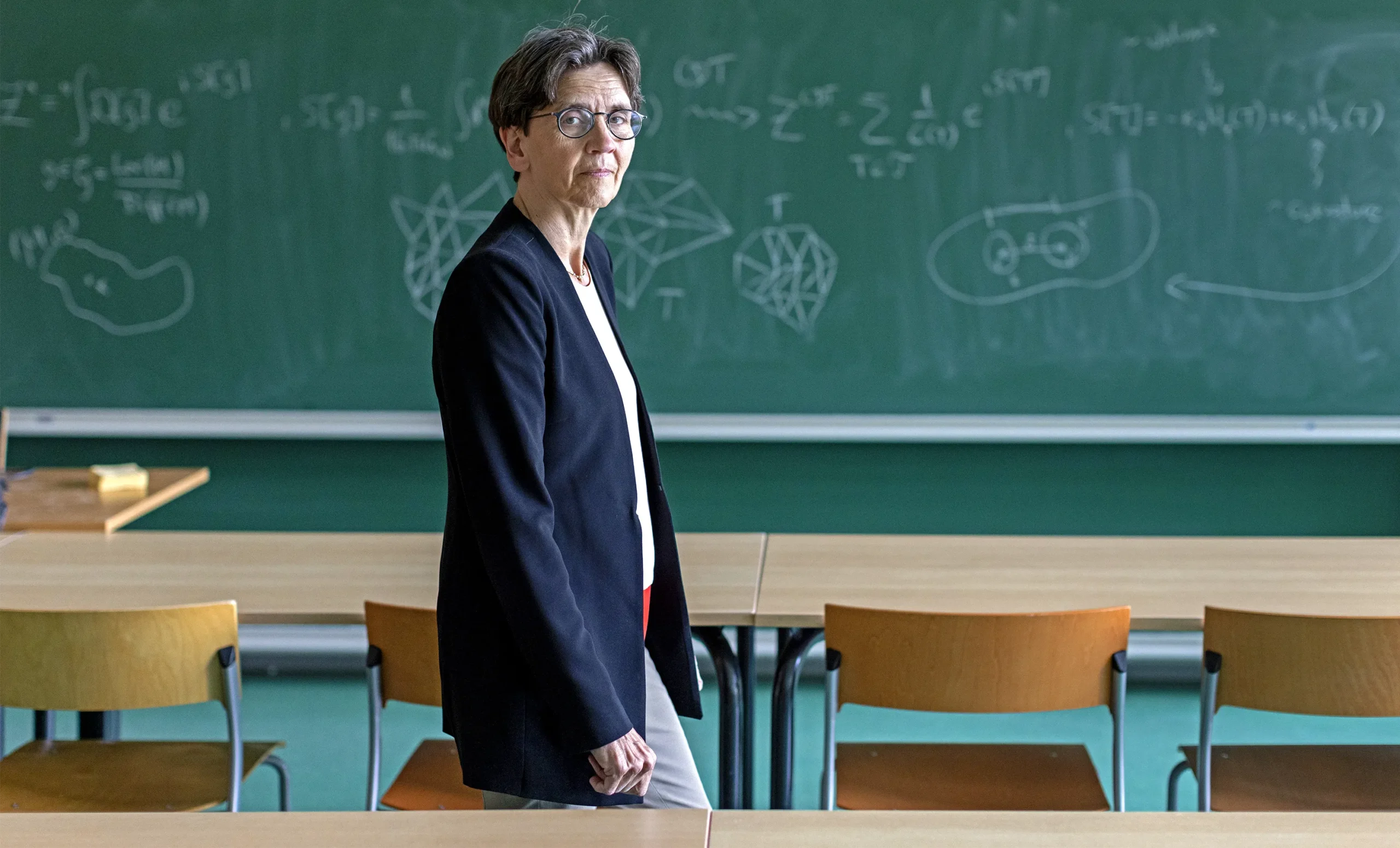
In her simulations, Loll saw that at tiny scales, space-time may have a completely unexpected texture.
Ilvy Njiokiktjien for Quanta Magazine
Do you think the search for simple, beautiful theories is a dead end?
It could be. For years the community has been driven by the theory-of-everything approach, that you should be able to write down the one formula from which everything else follows. Now I wonder, is this really a realistic expectation?
We’re spoiled by how straightforward modern theories are. When you study quantum field theories, for instance, you have the particle concept. For the photon, which carries the electromagnetic force, it’s close enough. It’s not literally a little ball, but we have machines that can detect a local bit of energy. The detector makes a click, and that’s a photon.
But does the graviton — the hypothetical carrier of the gravitational force — exist in the same way? Freeman Dyson argued that it might be impossible to detect individual gravitons. The most straightforward gravitational analogue of the photon detector would be so massive that it would collapse into a black hole before finding a single graviton. Perhaps individual gravitons don’t exist in the same concrete way individual photons do. Maybe we’re asking too much of nature.
If we’re entering a post-string, post-loop stage of quantum gravity research, as you’ve written, what stage is that?
String theory gave us an embarrassment of riches. It had to be defined in 11 dimensions and needed a lot of undiscovered particles to make it consistent. It’s a beautiful toolbox that has given us so much, including the advancement of pure mathematics. But these exotic ideas haven’t really led us anywhere in terms of finding a unique theory of quantum gravity.
I perceive a new humbleness in the community. After having made these excursions to the very rich and exotic frameworks of loops, strings and other extended objects, where we got stuck in one way or another, we’re starting to rediscover the beauty of quantum field theory. And CDT is part of this trend of going back to basics.
